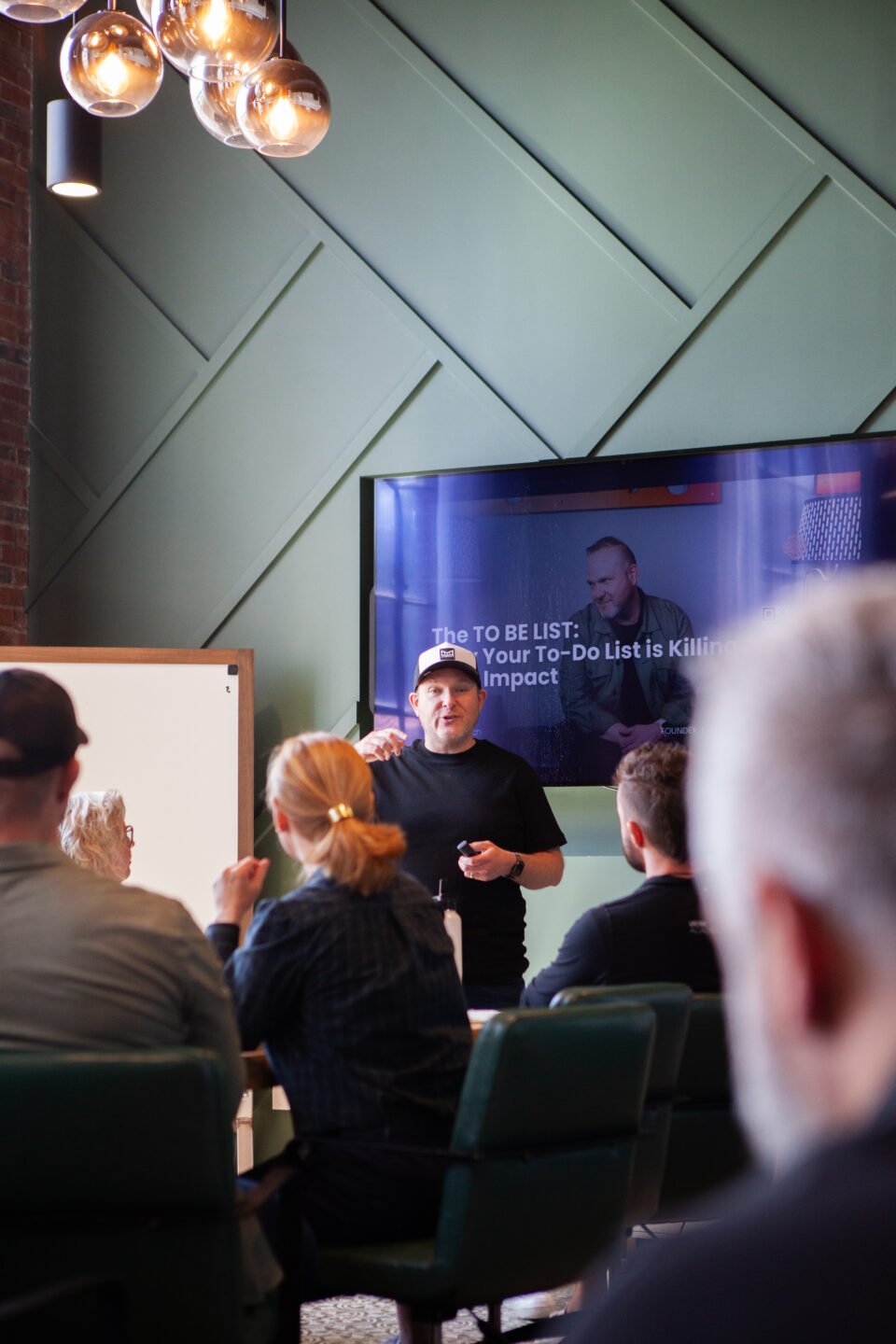Every executive I talk to says the same thing in a dozen different ways. AI has unlocked speed, scale, and precision. It is helping teams do more, faster, with less. The promise is real. The problem is also real. When companies adopt AI to enhance outcomes without the right coaching and support mechanics, the hidden emotional and psychological toll can stall progress, increase turnover, and quietly erode the very outcomes AI was meant to improve.
AI is not bad. It is necessary. The question is not whether you should implement it. The question is whether your leaders and teams are equipped to carry the weight of faster work, higher expectations, and new ways of thinking about value creation. If you want the performance gains without the human fallout, you need a plan for the people side of AI.
The Silent Pressure AI Introduces
AI raises the ceiling on what is possible. It also raises the floor on what is expected. Teams feel it. Leaders feel it. Three pressures show up again and again:
- Pace compression. Timelines shrink across the board. Work that took weeks now takes hours. The calendar does not adapt, so people fill the space with more tasks and fewer recovery moments.
- Identity dislocation. High performers who took pride in specialized craft now watch certain tasks become automated. If you do not redefine what excellence means, people may quietly question their value.
- Cognitive overload. AI augments decision-making, but it also multiplies inputs. Leaders swim in dashboards, prompts, and competing models. Without clear decision standards, analysis fatigue becomes the new normal.
None of these pressures are visible on a P&L in quarter one, but they will show up in quarter two and three as friction, attrition, and stalled initiatives.
Why This Is Not About Being Anti-AI
The biggest mistake is to frame the discussion as human versus machine. This is a human with machine moment. The smartest organizations treat AI as an amplifier of people, not a replacement. They pair new tools with new habits. They upgrade systems and skills at the same time. They acknowledge the emotional reality of change while moving decisively toward better performance.
AI is necessary. The leadership muscles to wield it well are also necessary.
The Hidden Costs You Can Predict and Prevent
If you launch AI in a vacuum, expect these costs:
- Change whiplash. Constant tool switching and half-baked rollouts create skepticism. Teams start waiting out the next shiny thing.
- Value ambiguity. People ask, “What is my unique contribution now?” Without an answer, motivation dips and passive resistance rises.
- Trust gaps. When leaders say, “We will do more with less,” but do not redesign workload and role clarity, teams hear, “We will push harder and hope you do not break.”
- Compliance over creativity. To keep up with pace, people default to safe outputs that mirror the model, not the original thinking that differentiates your brand.
These are solvable problems, and you do not have to slow down to solve them. You do need a structure.
The Coaching and Support Mechanics That Keep You Healthy at Speed
Here is a practical blueprint we deploy with executive teams. Use it as a checklist to stress-test your AI rollout.
- Identity and role re-definition
- Clarify what excellence looks like in an augmented world. If the model drafts, the human directs, critiques, and elevates. Write it down. Teach it. Celebrate it.
- Build a simple “human advantage” playbook for each key role. List the judgment, creativity, relationships, and ethical calls that only people will make.
- Workload governance
- When cycle time drops, cap new work intentionally. Set weekly work-in-progress limits per team. Tie intake of new projects to demonstrated capacity, not to perceived AI magic.
- Institute recovery blocks. Protect focus hours. Schedule debriefs after high-velocity sprints to release pressure and capture learning.
- Decision standards
- Define thresholds for when AI can inform, when it can recommend, and when a human must decide. Publish a one-page decision ladder everyone can memorize.
- Create an “if this, then that” rule set for data quality, privacy, and brand risk. Fewer escalations. Faster moves. Better sleep.
- Psychological safety with performance discipline
- Safety is not softness. It is the confidence to tell the truth fast. Use a Weekly Red/Yellow/Green to surface friction without blame. Red is a resource issue or an unclear decision. Yellow is a risk. Green is clear and on track.
- Normalize saying, “The model is wrong here, and here is why.” Honor dissent that improves outcomes.
- Upskilling and coaching cadence
- Pair tool training with applied practice. People learn when they ship. Design short sprints where teams experiment on real projects with coaching in the loop.
- Implement a monthly “AI Retrospective” led by a coach. What did the model accelerate. Where did it hallucinate. What guardrails need an upgrade. What process becomes the new standard.
- Outcome scoreboard
- Track both performance and well-being. Put throughput, quality, and cost on the same page as burnout risk, attrition signals, and workload balance. If it matters, measure it together.
- Communication ritual
- Announce changes with a simple three-part script: Why we are doing this. What will change for you this week. How we will support you. Consistency beats cleverness.
Questions Every Leader Should Answer Before Scaling AI
- What is the one sentence definition of the human advantage in our business.
- Which parts of our process deserve human judgment by design, not by accident.
- How will we prevent pace compression from becoming people compression.
- Where could AI subtly push us to prioritize convenience over connection with our customers or our team.
- What will we do next week to prove we care about both performance and people.
If you cannot answer these today, you are not ready to scale. You are ready to plan.
A Short Story From The Field
A growth-stage team we coached rolled out AI to speed content development and customer support. Output doubled in 30 days. Then the noise started. Customer tone drifted. Middle managers felt irrelevant. A few top performers quietly checked out. We paused, re-anchored role identity, set a decision ladder, and instituted a weekly Red/Yellow/Green with a strict work-in-progress limit. Thirty days later, quality and morale stabilized, response time continued to fall, and the team reported feeling more valuable, not less. Nothing mystical. Just leadership structure layered on top of new capability.
What Happens If You Do Nothing
You will still see short-term gains. Then you will wonder why the team seems brittle. You will start hiring to replace people who would have stayed. You will lose time chasing rework and reputational drift. You will feel busier and less in control. None of this is inevitable. It is simply what happens when technology evolves and leadership habits do not.
Your Next Right Step
If you are serious about capturing the upside of AI without burning out your people, now is the moment to invest in coaching and support mechanics. You do not need a twelve-month transformation to get momentum. You need ninety focused days with the right frameworks, rituals, and guardrails.
Book a Curiosity Call with Michael King to pressure test your current plan, identify the gaps, and design a people-first blueprint that accelerates outcomes. In twenty minutes we can map the next three moves that will keep your organization healthy at speed and position your team to break records without breaking.
When technology accelerates, leadership must mature. AI will not replace your people. Poor leadership will. Let’s build the system that makes sure your people win with the machines, not against them.
Ready to explore what this looks like for your team? Book your Curiosity Call with Michael King at Teams.Coach and let’s design your next ninety days.
https://calendly.com/teamscoach/30min
About Michael King
Michael King is an award-winning executive coach and the founder of Teams.Coach, Gawker Traffic, and CatalystCo. With two master’s degrees in Leadership and Executive Coaching from Bellevue University, he helps high-performing executives simplify complexity, optimize their leadership, and build teams that actually work.
A certified executive coach, Michael has spent years guiding Fortune 500 leaders, entrepreneurs, and teams through the real work of leadership—creating clarity, building systems, and driving results without the burnout.
When he’s not coaching, Michael is an accomplished singer/songwriter and music producer with over 100 published songs to his credit. He’s also a Ducati aficionado, a die-hard Apple fan, and probably has a Starbucks in his hand right now.







